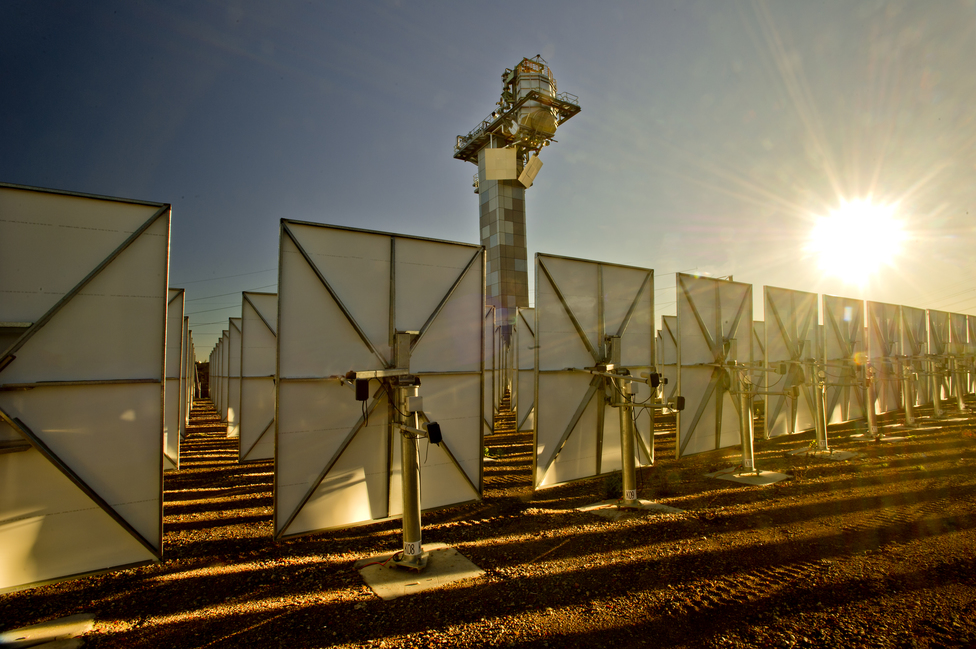Renewable energy has taken Australia by storm, with solar panels popping up on the rooftops of millions of Australian homes in the last decade. As attention now shifts to storing excess power in battery systems, suppliers are racing to market with a range of solutions to help homeowners get the most value from the sun’s rays.
Maximising the value of solar has become an obsession for the Australian technology start up Evergen. The Sydney-based company has recently come to market with a solution that mixes advanced machine learning capabilities with concepts from the Internet of Things to help homeowners get the best possible deal on their power consumption, all powered by Microsoft Azure.
The amount you pay for electricity depends on the time of the day, with the evening being the most expensive. Home owners with solar on their rooftop are normally unable to utilise all the energy they are generating during the middle of the day and are giving it to their energy retailer at a low price to sell to their neighbours at higher prices. Evergen’s intelligent battery system offering allows home owners to store this excess solar energy from the middle of the day for use when prices are at their peak.
At the heart of Evergen’s model is intelligent machine learning software technology that stays in constant contact with the solar and battery technology deployed in people’s homes, to monitor their performance and alert the homeowner of changes via a smartphone app.
According to Evergen’s Vincenzo Marciano, head of technology & innovation, its goal is to enhance the value that home owners get from their solar technology while also maximising its lifespan, and reduce their overall energy consumption costs.
“We can provide real insights back to our customers, so they can be proactive in ensuring they get the best out of their system,” Marciano says.
Evergen started life three years ago as a collaboration between the peak research agency CSIRO and diversified Australian financial services company AMP Capital, with a mission to explore opportunities in the energy sector and commercialise CSIRO-developed environmental energy technology. The company launched in pilot mode in 2015.
By connecting multiple home solar systems to a central hub, Evergen can build up a complete picture of how any individual system should be performing. Evergen can then provide real time reporting and alerts via its smartphone app when performance falls below expectations, which might indicate that panels have been damaged, overshadowed, or need cleaning.
And by learning the energy consumption patterns of a house, Evergen can also determine which is the cheapest source of energy to use at any given time, such as recharging the battery at night from the grid for use during the following day when power is more expensive. It can even tap into weather forecasts to predict what the efficiency of solar panels will be.
Marciano says early pilot trials of the technology has shown the CSIRO intelligent algorithms provide an additional 20 per cent savings to home owners above what a standard battery installation provides, resulting in total household energy savings of up to 80 per cent.
The technology is also capable of monitoring the condition of the batteries that are being used to store power, to ensure they are performing optimally.
While the concept sounds straightforward, bringing it to life has been anything but, Marciano says Evergen has required significant development for both the technology that monitors the system devices and the hub that manages the constant flow of messages back and forth from the system devices.
Marciano says that it has been important to gain access to a highly-scalable, high-performance technology platform without blowing its budget, and has achieved that by building its core technology on Microsoft’s Azure cloud. Housing Evergen’s core algorithms and messaging and queueing technology in Azure has enabled it to take advantage of Azure’s capabilities for real time data streaming, as well as its in-built analytics capabilities.
“We’re using Microsoft Azure as our primary platform to market,” Marciano said. “So we’re definitely embedded in the Microsoft world and using all the tools we can.”
Marciano says Evergen is also planning to use many of the new technologies that Microsoft is bringing to its Azure cloud, including machine learning technologies which will further enhance Evergen’s core technology.
Marciano says an additional benefit of working with Azure has been the familiarity of the .Net development framework and the simplicity of the interface, as well as ease of setting up the streaming analytics capability.
“It was just so simple, so easy, and we got our initial prototype up and running in just a matter of days,” Marciano says. “Azure houses our messaging and queuing system which allows us to actually communicate and talk to the devices. We’re using streaming analytics to do calculations for our savings calculator and pushing data for real-time information through to mobile devices.”
Marciano says Azure will boost Evergen’s ambition to grow rapidly in competition with some of the Australian energy industry’s biggest players. The total market potential for intelligent energy management systems has been estimated as eventually reaching upwards of AU$20 billion, and Evergen’s ultimate goal is to create a virtual power station by tying together multiple battery storage systems into a decentralised power generation network.
“We’re using this as a platform to be a serious player in the energy market, and start leveraging all the other opportunities the platform gives, not just for the green benefits to the home owner, but hopefully helping support the grid, which is where the big opportunities are for us going forward,” Marciano says.
While the company had only 50 customers in its pilot phase, that has quickly grown into the hundreds in 2016, with projections of thousands more joining in 2017.
“The solar industry went from just a handful of systems to a million in just a few years, and I think the batteries and intelligent systems are the next wave of that,” Marciano says. “So we see big growth over the next few years, in the thousands of installations.”
The company must be doing something right, as it successfully raised AU$3.7 million in venture investment in August 2016, including AU$2.9 million from AMP Capital and AU$800,000 from CSIRO.







